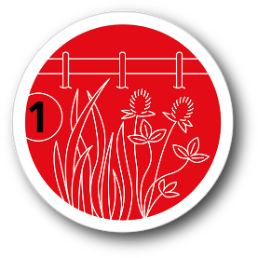This SRF researches ways of sustainably optimising the ecosystem services of grassland production systems within given framework conditions, bearing in mind the interests of agriculture, the environment and society. In this endeavour, questions are posed on several aspects:
- General: Within changing framework conditions, how can/must Swiss grasslands be managed in order to improve production and other ecosystem services in the long term?
- Sustainable management of meadows and pastures, and efficient use of feed: Structural change in agriculture proceeds apace; fewer and fewer farms are cultivating ever-larger acreages. What are the site-adapted strategies for sustainable land use and the feeding of livestock – in particular for the mountain region?
- Improving productivity and ecological quality: What plant species ideally complement one another, enabling high yields of high-quality feed to be produced in an efficient and environmentally friendly manner? Are mixed stands an option for adapting to climate change? How can weed problems be avoided and solved? How can the ecological quality of grasslands be improved?
- Targeted use of plant characteristics and components: What are the best new varieties of forage plants (in terms of yield, feed quality, robustness, persistence) under Swiss site and production conditions? How can special plant species with particular components (e.g. condensed tannins, high-sugar varieties, flavours) be deliberately used to increase the feed conversion rate, reduce environmental emissions and/or improve product quality? How can such special plant species be optimally cultivated?
- Seed mixtures for a wide range of demands on ley farming: Temporary leys (sown meadows) are an important link in the crop rotation of forage-producing farms on Swiss arable land. With a suitable mixture, top-quality livestock fodder can be produced at low cost. Cultivating the used plant species as a mixture is especially worthwhile, both for fodder production (greater yields of a more nutritious, tastier fodder) and for the environment (reduced use of nitrogenous fertilisers). What do such mixtures look like, and what do they achieve?
- Sustainable grassland production systems: How sustainable are the milk- and meat production systems in Switzerland? If necessary, how can sustainability be improved (including choice of location of farms)? How can the produced biomass be converted as efficiently and in an environmentally friendly manner as possible into products that can be used by humans?
- Capitalising on process and product quality: What are the specific characteristics required by consumers that distinguish products from a site-adapted, environmentally friendly mode of production characterising Swiss grassland-based livestock-rearing systems?






